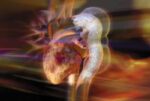Original title: Comparison of Two Antiplatelet Therapy Strategies in Patients Undergoing Transcatheter Aortic Valve Implantation. Reference: Eric Durand et al. Am J Cardiol 2013, et al. Percutaneous aortic valve replacement has been shown to be superior to medical treatment in inoperable patients and not inferior to surgery in high-risk patients. Anti-platelet therapy in these patients is usually<a href="https://solaci.org/en/2013/11/08/n-4061/" title="Read more" >...</a>
Incomplete revascularization: no longer a binary variable
Original title: Residual SYNTAX score after PCI for triple vessel coronary artery disease: quantifying the adverse effect of incomplete revascularisation. Reference: Christopher J. Malkin et al. EuroIntervention 2013;8:1286-1295. In the angioplasty branch of the SYNTAX study, complete revascularization was reached in 56.7% of the population. On the other hand, in the real world, around 40% of patients that<a href="https://solaci.org/en/2013/04/05/n-2822/" title="Read more" >...</a>
Paclitaxel eluting balloon in the femoropopliteal region
Original title: Paclitaxel-Coated Versus Uncoated Balloon Angioplasty Reduces Target Lesion Revascularization in Patients With Femoropopliteal Arterial Disease. A Meta-Analysis of Randomized Trials. Reference: Salvatore Cassese et al. Circ Cardiovasc Interv. 2012;5:582-589. Balloon angioplasty is one of the most frequent alternatives used in patients with peripheral vascular disease, especially in the femoropopliteal region. However, its effectiveness is reduced in<a href="https://solaci.org/en/2013/03/27/n-2997/" title="Read more" >...</a>
Critical limb ischemia with infrapatellar disease. High odds of limb salvage despite restenosis.
Original title: Long-term outcomes following infrapopliteal angioplasty for critical limb ischemia. Reference: Ruby C. Lo et al. J Vasc Surg 2013;-:1-10. Angioplasty has established itself as an alternative for the treatment of infrainguinal peripheral disease with comparable results in terms of limb salvage for surgery. However, this data refers to the iliac or femoral territory but it is<a href="https://solaci.org/en/2013/02/28/n-3116/" title="Read more" >...</a>
Chronic Type B Dissection, better with endoprosthesis than with medical treatment
Original title: The results of stent graft versus medication therapy for chronic type B dissection Reference: Xin Jia et al. J Vasc Surg 2013;57:406-14 In many institutions patients with Chronic Stanford Type B Aortic Dissection is most often treated medically, and the thoracic endovascular aortic repair implant TEVAR or the surgical procedure are reserved for those who evolve<a href="https://solaci.org/en/2013/02/08/n-3032/" title="Read more" >...</a>
Stent implantation in the popliteal artery is feasible.
Original title: Treatment of Complex Atherosclerotic PoplitealArtery Disease With a New Self-Expanding Interwoven Nitinol Stent. 12-Month Results of the Leipzig SUPERA Popliteal Artery Stent Registry. Reference: Dierk Scheinert, et al. J Am Coll Cardiol Intv 2013;6:65–71 Currently, peripheral angioplasty (PTA) of the popliteal artery is a real challenge since stent implantation is controversial and the outcome of balloon<a href="https://solaci.org/en/2013/01/31/n-3263/" title="Read more" >...</a>
Periprocedural stroke, unrelated to the access site?
Original title: Influence of access site choice on incidence of neurologic complications after percutaneous coronary intervention. Reference: Karim Ratib et al. Am Heart J 2012;0:1-8 Article in press. Neurological complications post coronary angioplasty (PCA) are sporadic but they are associated with eight times increased mortality. A transradial approach has multiple advantages over femoral but could theoretically have a<a href="https://solaci.org/en/2013/01/14/n-3186/" title="Read more" >...</a>
Balloon Pulmonary Angioplasty (BPA) in patients with Chronic Thromboembolic Pulmonary Hypertension
Original title: Refined Balloon Pulmonary Angioplasty for Inoperable Patients with Chronic Thromboembolic Pulmonary Hypertension. Reference: Hiroki Mizoguchi et al. Circ Cardiovasc Interv. 2012;5:748-755. Patients with Chronic Thromboembolic Pulmonary Hypertension (CTE-PH) have bad prognosis. Pulmonary thromboendarterectomy can significantly reduce pulmonary pressure but, due to comorbidity or technical matters (very peripheral thrombi), not all patients are good candidates for this<a href="https://solaci.org/en/2013/01/11/n-3179/" title="Read more" >...</a>
Angioplasty for the erectile dysfunction
Original title: Zotarolimus-Eluting Peripheral Stents for the Treatment of Erectile Dysfunction in Subjects With Suboptimal Response to Phosphodiesterase-5 Inhibitors. Reference: Jason H. Rogers et al. J Am Coll Cardiol 2012. Article in press Up to 52% of men between 40 – 70 years old present some degree of erectile dysfunction, and 50% of these men get a suboptimal<a href="https://solaci.org/en/2012/11/30/n-3844/" title="Read more" >...</a>
Complex angioplasty with ventricular assist
Original title: Real-Word of the Impella 2.5 Circulatory Support System in Complex High-Risk Percutaneous Coronary Intervention: The USpella Registry Reference: Brijeshwar maini, et al. Catheterization and Cardiovscular Intervention For about a decade angioplasty has begun to be performed in increasingly complex patients (PE) such as those with left coronary trunk injury, 3-vessel injury, poor ventricular function and surgically<a href="https://solaci.org/en/2012/11/29/n-3830/" title="Read more" >...</a>







